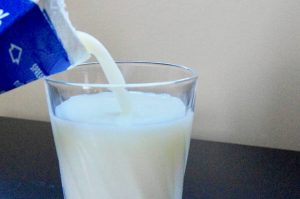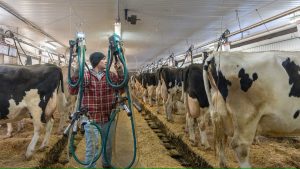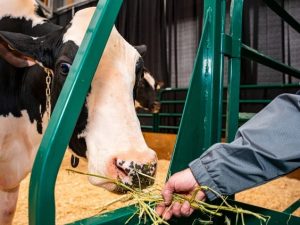
Manitoba dairy producers will be getting used to a new way of doing business when it comes to traceability.
On Oct. 5, Lactanet Canada, along with the Dairy Farmers of Canada, announced the launch of DairyTrace, a new program that will take over traceability recording and reporting for the dairy sector nationwide.
Why it matters: Dairy producers are transitioning to a new, national traceability system.
The program will, “support the dairy industry by protecting the economic livelihood of dairy producers, as well as bring peace of mind to consumers in the event of an emergency,” according to an Oct. 5 release from the Dairy Farmers of Canada. “As dairy farmers embrace the DairyTrace system and report their traceability data, a significant benefit will be state-of-the-art traceback capabilities in the event of an emergency or animal health crisis.”
The program helps fill out the traceability module of proAction, the dairy sector’s multi-pronged effort for self-regulation. The Dairy Farmers of Canada has announced six modules as part of that self-regulatory initiative, ranging from milk quality and food safety, to animal care, biosecurity, traceability and environmental impact.
Within the traceability module, the initiative singled out three pillars: unique identification of each animal, premise identification and record of each animal movement between premises, nationwide.
Prior to the launch of DairyTrace, producers may have voluntarily submitted on-farm traceability data such as births, deaths or moves between herds through the Canadian Cattle Identification Agency’s Canadian Livestock Tracking System (CLTS), Brian Van Doormaal, chief services officer with Lactanet Canada, said.
This June, the Canadian Food Inspection Agency recognized farmer-run Lactanet Canada as national administrator for dairy animal traceability.
According to Van Doormaal, the dairy sector held off requiring mandatory traceability reports to a centralized database, knowing that DairyTrace was coming.
Now, however, producers should be looking to activate their DairyTrace accounts, as the CCIA has backed off administration of white dairy tags and directed producers to submit their data to DairyTrace instead.
Van Doormaal says they are currently reaching out to each dairy farmer to communicate account numbers, information on activation, and to ask permission to move over any previously reported traceability data from the CLTS to the new system.
Once activated, producers will be able to tap into their account from either a web browser or the program’s mobile app, something the Dairy Farmers of Canada hopes will increase usability for producers.
The system has also been designed to mesh with the systems in place at abattoirs, auction marts and assembly yards, the Dairy Farmers of Canada said. According to the Oct. 5 release, “exchange systems have been built to allow information to be funnelled into the DairyTrace database. This will allow affiliates the option of using the new DairyTrace system or CCIA’s Canadian Livestock Tracking System (CLTS).”
“We’ve built this relationship with the CCIA to divide the species, beef versus dairy, but yet have a data exchange system between the two organizations and two databases so that we can facilitate it for all stakeholders,” Van Doormaal said.
Ear tag changes
As of Oct. 5, the CCIA was no longer responsible for white dairy tags.
The same will eventually be true for dairies using yellow tags on calves bound for the beef sector, although producers who have already stocked up will have some wiggle room before those tags become obsolete.
Van Doormaal says the new single white button ear tag, ordered through Holstein Canada, will eventually replace yellow CCIA tags for all calves born on the farm, regardless of if they are meant for the beef industry.
“We understand that dairy farmers may have already purchased yellow button tags and have inventory in stock, and so we didn’t want to cut that off, for sure,” he said. “But there is a general promotion and encouragement to dairy farmers to gradually move away from the use of those yellow button tags over the course of the next couple of years, and in a couple of years they will no longer be usable.
“We expect that you’re going to make new orders of tags,” he later added. “We would prefer that you would buy the new white button tag, because then you’re supporting the dairy traceability system rather than the beef traceability system, and if you’re a dairy farmer, you should be supporting the dairy traceability system.”
There will be no immediate changes for yellow tag use, the CCIA has said, “however, dairy producers who use a mix of yellow and white dairy tags, must have an active DairyTrace account for submitting their white dairy tag data.”
“If livestock operators submit a mix of white dairy tags with yellow tag data, the white dairy tag information will be redirected to the DairyTrace program automatically,” an Oct. 5 release from CCIA read.
The Dairy Farmers of Canada says it plans to phase out yellow tag use by September 2023.
Van Doormaal could not say how many dairy producers have already activated their DairyTrace account. Producers have been notified in waves following the launch, he said, in an effort to avoid overwhelming customer support services.
Producers can find more information on the new system at dairytrace.ca. https://dairytrace.ca/

























